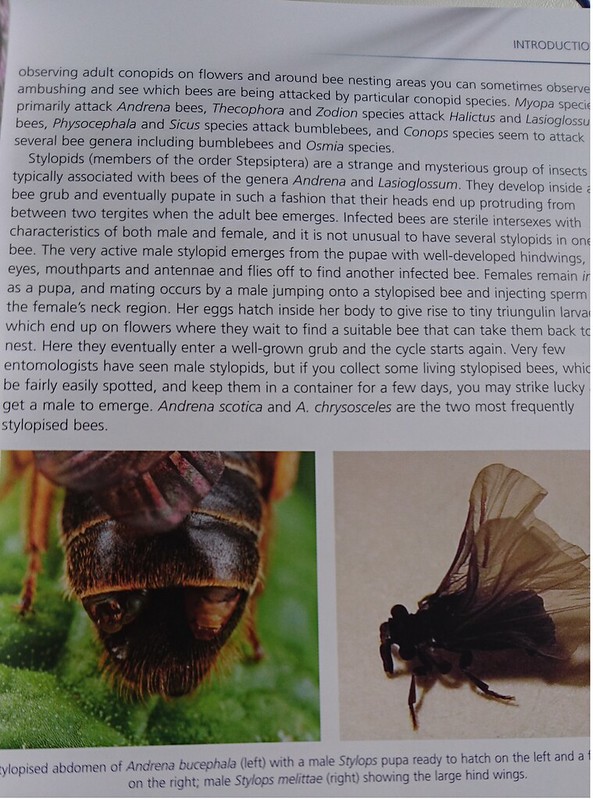GardenersHelper
In Memoriam
- Messages
- 6,344
- Name
- Nick
- Edit My Images
- Yes
And just to add I suspect what you are seeing here is the males emerging from the eggs. The egg capsules remind me of shield bug eggs which have a weakened "lid" on top through which the young emerge. I suspect the third is yet to emerge (although there is the possibility it could be the female "mother", but it looks too similar to the other egg cases to me).
My friend Ed Phillips (who specialises in bees, among other things) has another example on his site:
http://www.edphillipswildlife.com/photo14509035.html
Ah ha, that looks very similar. Thanks.
My thinking is along the same lines as yours as to what is going on, but there again the other male was around and I read that the females emit a pheromone which attracts the male. It might have just emerged of course, from that bee or from something else, but there again the link that Alf gave us talks of them copulating with the female inside the host (where she resides all the time). Could that one on the back be mating rather than emerging? My guess would be that it is emerging (especially as I read that the mating can take a surprisingly long time, and that one was there and gone quite quickly), but that is all it is ... a guess.


 bee book page 2
bee book page 2